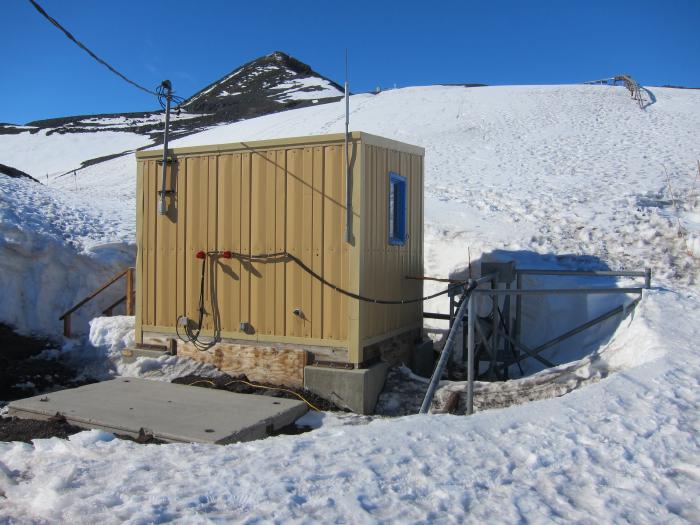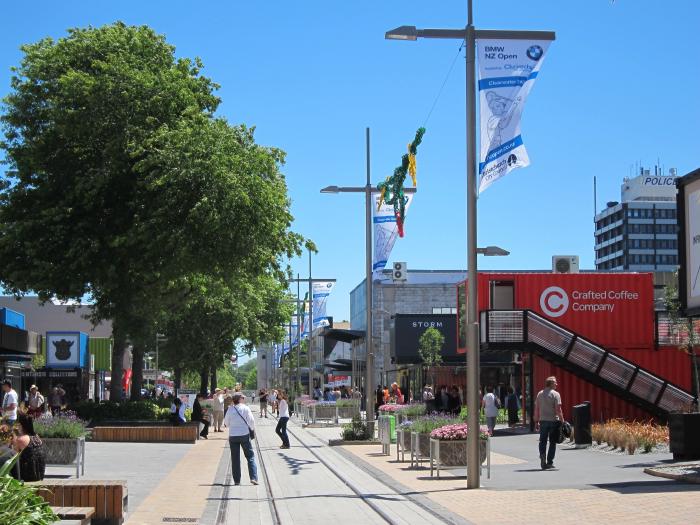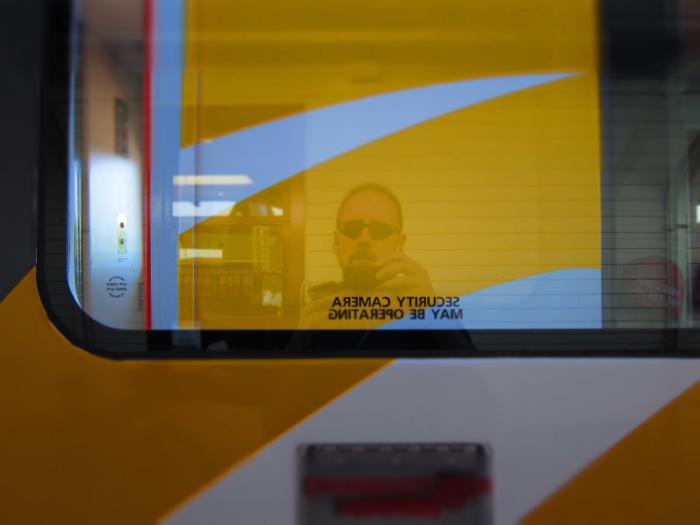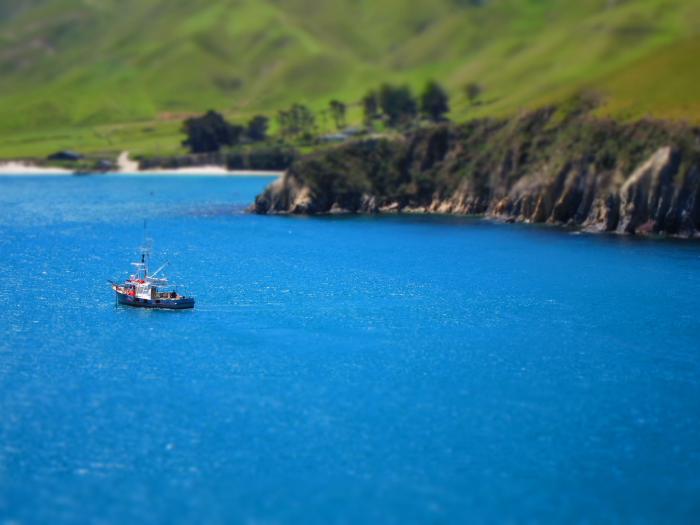Milvans and Container Malls
southpole .....
Later: Programming Languages
Earlier: Oxygen
Dec. 2, 2011, 08:10 NZDT Tranz Coastal train from Christchurch to Picton


Another gorgeous summer day here as the countryside rolls by: grassy, green hills punctuated by trees passing singly and in groups, as well as cattle, horses, and the ubiquitous sheep, which appeal strongly for some reason today, signaling tranquility, domesticity… humans living in pastoral harmony with the land. Icebreaker, perhaps my favorite clothing brand, puts tags on their merino wool clothes, each with a unique code you can type into their Web site to find out which sheep farm in New Zealand your woollen item comes from. I wonder if I’ll pass the farm that made the wool in the shirt I’m wearing. It’d be nice they would sell the sheep as well from their Web site. Or maybe even whole farms….
I’m on my habitual route from Christchurch to Wellington to see friends Neil and Amelia for a few days before heading back to Chicago. The usual blue, slightly creaky train cars have been upgraded to sleek new tan-colored ones with power outlets under the seats, bigger windows and a quieter ride — overall, an improvement. Flying would take one-tenth the time but I’m spending enough time on airplanes, and at any rate the scenery is quite gorgeous, an antidote to both the polar plateau and the coming Chicago winter.
I had just over a full day in Christchurch. As with the Elms hotel on the way down, the Pavillions was a disappointment. Expensive WiFi and rooms, noisy, with somewhat cheesy decor. Paying for WiFi is particularly irksome since it I know how cheap it is to implement — it feels like paying for tap water, by the cup. However, beggars cannot be choosers and the hotel situation in Christchurch is dismal after the February quake.
The advantage of the Pavilions is that is it relatively close to downtown. Had a big breakfast yesterday at a nearby cafe, and an interesting conversation with a friendly fellow diner who is very into meditation and marathoning and was accompanying a group of kids coming out of some month-long South Island adventure. Then I trotted down Victoria Street into the downtown area. Much is still fenced off so I had to circumambulate a couple-block area in various stages of demolition. Eventually I found myself on Armagh street staring at a familiar sign, that of the Winsor hotel, the first place I ever stayed in New Zealand. The familiar building, however, is gone, replaced by a generic looking construction-in-progress. Half a block closer to downtown, the Devon, my favorite place to stay, is completely gone, recognizable only by the fence behind the original parking lot. It’s all parking lot now. One thing to be said about Christchurch is that, on average, you can see farther now.
I’ve laid down a lot of pre- and post-Antarctic memories in these places so it was a blow to see them gone… gone so completely that it was hard to even tell where they’d been. Certainly a vivid illustration of the impermanence of things. Walking back towards the hotel I was snatched up by IceCube colleagues driving by: Stephanie and Anthony from Canterbury University. We were joined by Sarah at a combination cafe and garden store, where I had a delicious salad (still making up for polar freshie deficit) and “chocolate ice” (a sort of shake made with chocolate and whipped cream). After lunch we drove downtown to the new Cashel Mall, an area that was hit so hard that no original buildings remain. Instead, a few dozen structures made of shipping containers occupy a roughly one block area, serving as a new shopping mall. This sounds dubious on paper but in execution it was, like many things New Zealand, fabulously gorgeous and chic — imagine FEMA as tutored by hip architects gunning for a multi-page spread in Dwell Magazine. Walked back alone past the Christchurch art gallery, the Arts Centre, and the Dux De Lux, all still closed. Then through the Botanic Garden, in full bloom and betraying no evidence of seismic calamity, and “home” for Thai dinner and an early bedtime to prepare for the early morning departure of the train.
Christchurch and McMurdo seemed to lift me out of my slightly numb South Pole funk. In McMurdo, I felt some of the thrill towards the gritty texture of the town I used to experience each time I came down. Much of that texture has been bypassed in recent trips because they were straight-throughs, landing at Pegasus only to change planes.
My roommate in McMurdo was Bill, a kindly videographer from Chicago who’s lived in Louisiana long enough to acquire the Southern drawl. Bill said out of the blue, “It really is the simple pleasures down here which make life worth living.” A couple of showers and salads and nine hours of sleep, concurrent with continual re-saturation in oxygen, and I was inclined to agree. By Wednesday morning, I had enough time and energy to walk to Hut Point and summit Ob Hill before lunch, taking lots of pictures of “milvans” (shipping containers), buildings, and rock and ice along the way. At Hut Point I sat for awhile with eleven seals sunning themselves nearby on the ice, some the size of small Chevies. Trails from the seals to nearby holes in the ice which looked far too small to accommodate the animals… and some blood stains near one of these were a reminder that this was not a sanitized game park but actual habitat, with life and death coexisting precariously as always… perhaps more so, at the base of Mount Erebus (whose volcanic plume could be seen in the clear, continual daylight), there on the edge of the highest, windiest, driest, coldest, iciest, emptiest, cleanest, darkest, quietest continent.
At lunch I met a longtime colleague Ryan, waiting for his LC-130 ride to Wais Divide. Ryan went to the Pole as an undergraduate on AMANDA, years before I did, and now he does mostly glaciology and climate studies at UC Berkeley, logging dust concentrations as a function of depth in deep holes across Antarctica. We talked about deploying to the Ice over and over again. His perspective interested me. “It’s a nice break from your routine, back up North. And you come back stronger each time.” I thought about it for a bit, and I think I agree. As one gets older it is easy to get into a comfortable routine — I have a really good life in the North: Eden, meditation, art, work, Chicago, Madison, family and friends. But the months do speed by, and deviations from routine seem more and more jarring. Traveling does break you out of that. Even simple things like remembering what needs to be done without relying on a computerized to-do list seem easier after a few weeks of having to keep track of gear, travel dates, and ever-changing circumstances.
I had time for a nap before reporting to the Movement Control Center for the flight to Christchurch. Eighteen of us packed our gear and selves into a Delta and headed out to the Ice Runway, one of the last flights to do so this season (flight operations transition to Pegasus airfield as of today, considerably farther away from town). Despite the quick trip to the plane, we wound up spending a good hour parked nearby, while the back of the Delta gradually turned into a greenhouse, cooking us in our ECW gear until we opened, against strict instructions not to, the back door of the vehicle to let in some cool air. Finally we made it on board and got a good look at the cause for delay — two empty liquid helium dewars, each the size of a small school bus, which no doubt were tricky to tie down correctly (I, for one, was happy for the extra attention to detail on the matter).
Eighteen passengers is a pretty light manifest for a C-17. After takeoff some people took several seats along the side walls and managed to sleep that way for most of the five hours to Christchurch. I was perhaps the only one to mosey up to the flight deck. Talked with one of the pilots for awhile, who said he’d been to 55 countries since he started flying in his squadron. Most commonly Iraq and Afghanistan, of course, but also frequently to Southeast Asia — they are apparently still finding remains of American soldiers in Vietnam (DNA techniques being the evident game-changer there), and aren’t above sending C-17s down to collect them, with appropriate ceremony, one assumes.
We’re pulling into Kaikoura now, so I’m going to tie this off for today and get a breath of fresh air. Already saw some seals in the water from the train. Liquid water, as far as the eye can see… what a strange and marvelous improvement, over an ocean of ice.


Later: Programming Languages
Earlier: Oxygen